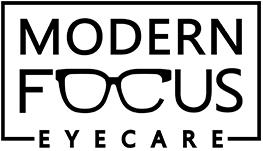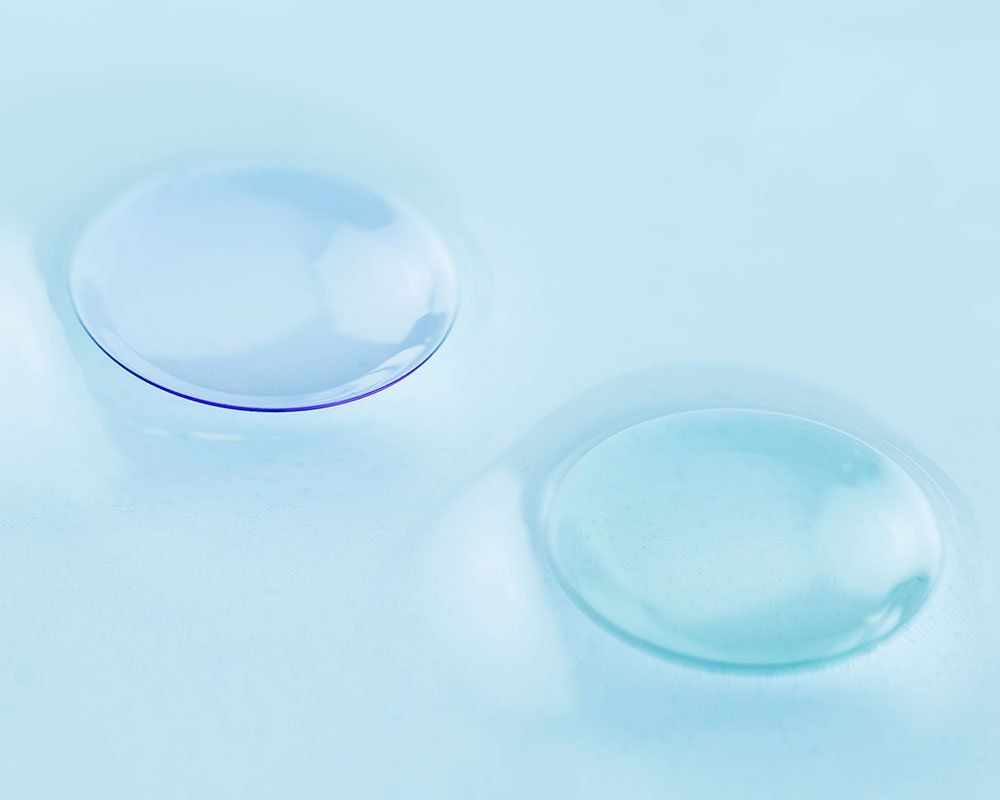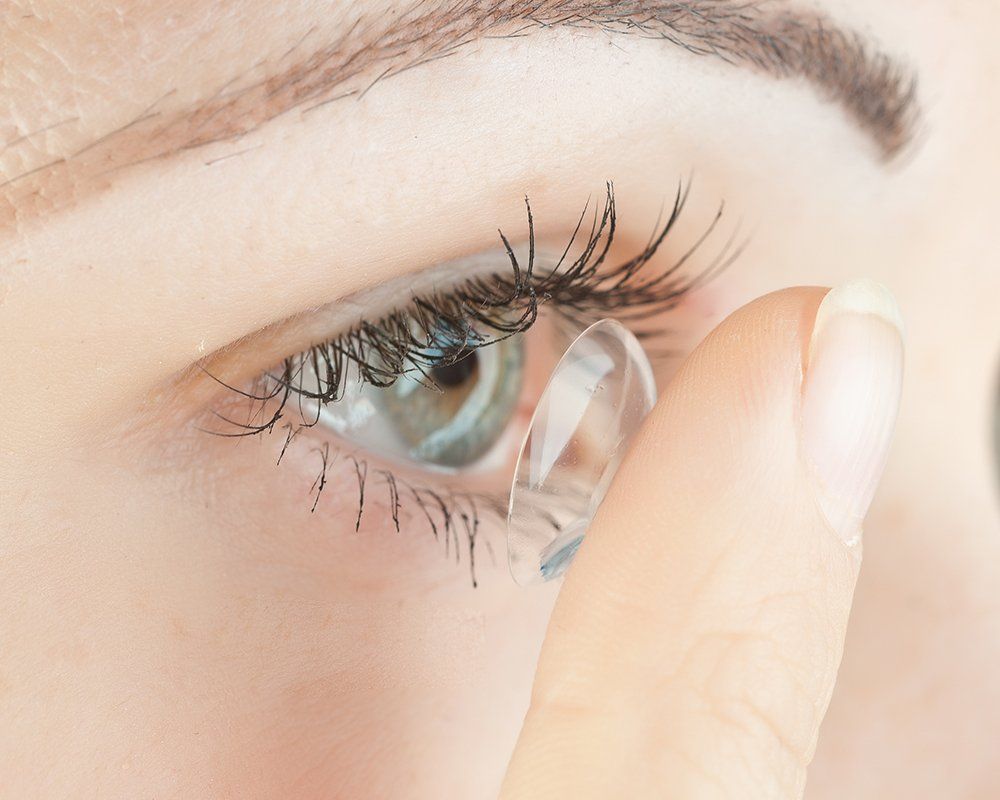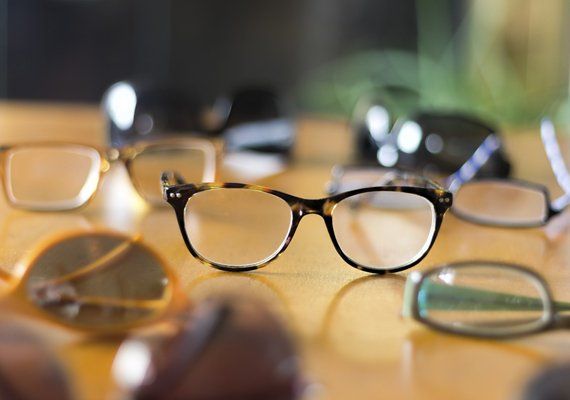CONTACT LENSES
The doctors at Modern Focus provide a comprehensive contact lens evaluation and fitting, offering a trial lens to make sure that vision and comfort meet your needs and standards.
Home > Eyewear > Contact Lenses
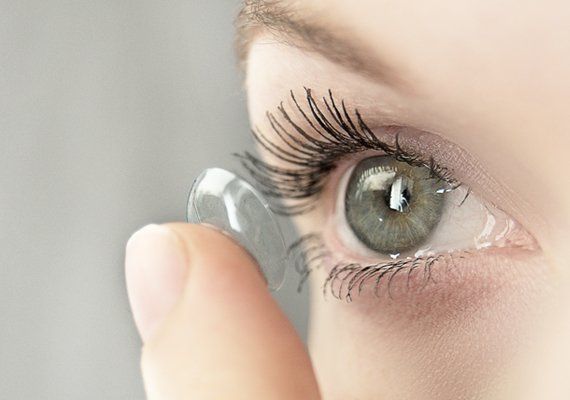
Contact Lenses
Contact lenses, also simply referred to as contacts, are thin lenses placed directly on the surface of the eyes. They are ocular prosthetic devices that can be worn to correct vision or for cosmetic or therapeutic reasons. Modern Focus offers a whole range of contact lenses to cater to all requirements, whether you wear them daily, weekly, use monthly disposables, or conventional lenses. Our inventory includes disposable soft contact, bifocal/multifocal, toric, and colored lenses. Welcome to the home of all things contact lenses.
Our team of eye specialists will conduct a thorough eye exam to come up with an accurate prescription that rules out any pre-existing conditions that may be problematic.
Following the exam, you will get an opportunity to try out some contact samples to discover the best fit and material. This is done on the same day as the exam and you can also take some home with you to feel them out. Further adjustments are made in the days following the initial fitting to arrive at the most suitable fit and material.
Modern Focus’ team of eye specialists makes sure that patients know how to take proper care of their contact lenses and are well aware of the pitfalls of not doing so. This is followed up by long-term follow-ups to check on the condition of the lenses and how they are being maintained.
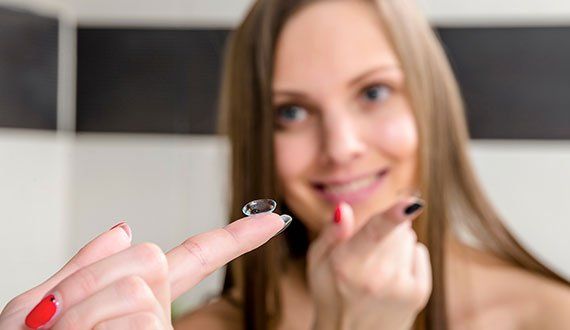
Types of Contact Lenses
The use of contact lenses helps millions of people see clearly. Over the years, lens materials and designs have improved significantly. Maybe it's time to try contacts again if you've tried them in the past but stopped because of discomfort or poor quality. We'll help you select the best option for your eyes! Various options are available depending on your prescription correction, tear production, lifestyle, etc. Contact lenses are classified in a variety of ways such as:
-
By their primary function
ButtonGreat solution for those who spend extended periods of time in front of a screen, ranging from simple single vision options to the latest in digital computer and office space progressive lenses.
-
Material used
ButtonPolarized lenses contain an additional filter that limits light traveling at certain angles, reducing glare, visual noise, and providing additional comfort in bright environments. They are especially helpful while on the road or water.
-
Wear schedule
ButtonThese lenses can serve a variety of purposes, but are primarily used by patients over 40 who are starting to experience the effects of Presbyopia, basically a loss of the ability to see up close items. These lenses may include single or multiple lined segments to correct for near vision, or in the case of Progressives, they offer a no line solution that corrects for distance, intermediate, and near. There are also specialty solutions available depending on your needs.
-
Replacement schedule
Button
-
By their primary function
ButtonGreat solution for those who spend extended periods of time in front of a screen, ranging from simple single vision options to the latest in digital computer and office space progressive lenses.
-
Material used
ButtonPolarized lenses contain an additional filter that limits light traveling at certain angles, reducing glare, visual noise, and providing additional comfort in bright environments. They are especially helpful while on the road or water.
-
Wear schedule
ButtonThese lenses can serve a variety of purposes, but are primarily used by patients over 40 who are starting to experience the effects of Presbyopia, basically a loss of the ability to see up close items. These lenses may include single or multiple lined segments to correct for near vision, or in the case of Progressives, they offer a no line solution that corrects for distance, intermediate, and near. There are also specialty solutions available depending on your needs.
-
Replacement schedule
Button
Types of Contact Lenses
Contact lenses are classified in a variety of ways such as:
-
By their primary function
ButtonGreat solution for those who spend extended periods of time in front of a screen, ranging from simple single vision options to the latest in digital computer and office space progressive lenses.
-
Material used
ButtonPolarized lenses contain an additional filter that limits light traveling at certain angles, reducing glare, visual noise, and providing additional comfort in bright environments. They are especially helpful while on the road or water.
-
Wear schedule
ButtonThese lenses can serve a variety of purposes, but are primarily used by patients over 40 who are starting to experience the effects of Presbyopia, basically a loss of the ability to see up close items. These lenses may include single or multiple lined segments to correct for near vision, or in the case of Progressives, they offer a no line solution that corrects for distance, intermediate, and near. There are also specialty solutions available depending on your needs.
-
Replacement schedule
Button
-
By their primary function
ButtonGreat solution for those who spend extended periods of time in front of a screen, ranging from simple single vision options to the latest in digital computer and office space progressive lenses.
-
Material used
ButtonPolarized lenses contain an additional filter that limits light traveling at certain angles, reducing glare, visual noise, and providing additional comfort in bright environments. They are especially helpful while on the road or water.
-
Wear schedule
ButtonThese lenses can serve a variety of purposes, but are primarily used by patients over 40 who are starting to experience the effects of Presbyopia, basically a loss of the ability to see up close items. These lenses may include single or multiple lined segments to correct for near vision, or in the case of Progressives, they offer a no line solution that corrects for distance, intermediate, and near. There are also specialty solutions available depending on your needs.
-
Replacement schedule
Button
Types of Contact Lenses
Contact lenses are classified in a variety of ways such as:
-
By their primary function
ButtonGreat solution for those who spend extended periods of time in front of a screen, ranging from simple single vision options to the latest in digital computer and office space progressive lenses.
-
Material used
ButtonPolarized lenses contain an additional filter that limits light traveling at certain angles, reducing glare, visual noise, and providing additional comfort in bright environments. They are especially helpful while on the road or water.
-
Wear schedule
ButtonThese lenses can serve a variety of purposes, but are primarily used by patients over 40 who are starting to experience the effects of Presbyopia, basically a loss of the ability to see up close items. These lenses may include single or multiple lined segments to correct for near vision, or in the case of Progressives, they offer a no line solution that corrects for distance, intermediate, and near. There are also specialty solutions available depending on your needs.
-
Replacement schedule
Button
Primary Function
Correction of refractive error
- Corrective contact lenses work to improve vision, usually by correcting refractive error through directly focusing light so it enters the eye with ample power for clear vision.
- They are typically used to correct myopia and hypermetropia.
Correction of presbyopia
- Correction of presbyopia, the need for a reading prescription that is different from that for distance, presents fitting challenges which can be tackled through two main strategies: multifocal lenses (e.g. bifocals or progressives) and monovision (single-vision lenses.)
Other types of vision correction
- For those with certain color deficiencies, a red-tinted "X-Chrom" contact lens may be used.
- Does not restore normal color vision but allows some color-blind people to distinguish colors better.
- Red-filtering contact lenses can also be used for extreme light sensitivity in visual deficiencies such as achromatopsia.
Cosmetic contact lenses
- A cosmetic contact lens is designed to change the appearance of the eye.
- These lenses may also correct refractive error.
Therapeutic scleral lenses
- A large, firm, transparent, oxygen-permeable contact lens that rests on the sclera and creates a tear-filled vault over the cornea.
- Works to improve vision and reduce pain and light sensitivity for disorders or injuries to the eye, such as severe dry eye syndrome, aniridia, microphthalmia, corneal ectasia, keratoconus, neurotrophic keratitis (anesthetic corneas), as well as chemical and burn injuries.
Other types of vision correction
- For those with certain color deficiencies, a red-tinted "X-Chrom" contact lens may be used.
- Does not restore normal color vision but allows some color-blind people to distinguish colors better.
- Red-filtering contact lenses can also be used for extreme light sensitivity in visual deficiencies such as achromatopsia.
Therapeutic soft lenses
- Soft lenses are often used in the treatment and management of non-refractive disorders of the eye.
- Used in the treatment of conditions including bullous keratopathy, descemetocele, corneal ectasia, dry eyes, corneal abrasions and erosion, keratitis, anterior corneal dystrophy, corneal edema, Mooren's ulcer, and neurotrophic keratoconjunctivitis.
Materials
Rigid lenses (Rigid gas permeable lenses or 'RGPs' Lenses)
- Made from rigid materials that are oxygen-permeable.
- Can also be made as a front-toric, back-toric, or bitoric.
- Can be worn in more challenging environments than soft lenses.
- Correct corneal astigmatism and corneas with irregular geometries, such as those with keratoconus or post-surgical ectasias.
Soft lenses
- More flexible than rigid lenses (can be gently rolled/folded without damaging the lens.)
- Unlike rigid lenses, they don’t require a period of adaptation to reach a comfort level
Hybrid
- Typically consist of a rigid center and a soft "skirt".
- Can also be "piggybacking" of a smaller, rigid lens on the surface of a larger, soft lens.
- Deliver the vision correction benefits of a rigid lens and the comfort of a soft lens.
Wear schedule
- A "daily wear" (DW) contact lens is designed to be worn for one day and removed before sleeping.
- An "extended wear" (EW) contact lens is designed for continuous overnight wear, typically for up to 6 consecutive nights.
Replacement schedule
- Single-use lenses (called 1-day or daily disposables) are discarded after one use. In the absence of wear and tear of repeated use, the lenses can be made thinner and lighter, greatly improving their comfort. They are also useful for patients with ocular allergies, prone to infection, wear contact lenses infrequently, as well as children, as cleaning or disinfecting is not necessary, leading to improved compliance.
- Other disposable contact lenses can be replaced every two or four weeks.
- Quarterly or annual lenses, which used to be very common, are now much less so.
- Rigid gas permeable lenses are very durable and may last for several years without the need for replacement.
Contact Our Optometrist
All eye vision care needs can be handled by our ophthalmologists, who have decades of experience. You can reach our eye care center at (972) 617-8000 if you'd like to schedule a eye exam with an optometrist.
If you have any questions, schedule an appointment
With Our Eye Doctor or Call Us At (972) 617-8000
Modern Focus is your one-stop Eyecare Center in Texas. We have a team of highly-experienced optometrists to examine, diagnose, treat, and manage diseases, injuries.
Useful Links
Our Eye Services
Copyright © 2021 Modern Focus. All rights reserved.

